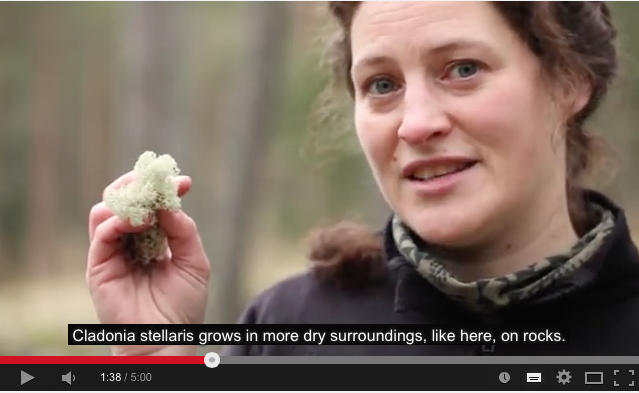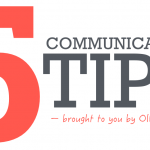Mirja Hagström “Instead of getting annoyed, is there anything I can do about this misconception?”
[CRASTINA SHORTS] During Swedish Christmas time, a botanical misconception keeps irritating biology interested people year after year: the stuff Swedes put in their candle holders is not ”white moss” as the vendors claim, it is a lichen! Mirja Hagström decided to put things straight with a YouTube video—which went viral.
Mirja Hagström holds a M.Sc. in Earth and Biology Sciences from Stockholm University. She works at Lantmäteriet, the Swedish mapping, cadastral and land registration authority (but published the video as a private person).
Tell us a little about your video!
I was one of those who got annoyed every time I saw the mislabeled bags in the stores or when journalists used the wrong name year after year. Then I asked myself: instead of getting annoyed, is there anything I can do about this misconception? And the answer was: Yes, there is. I can inform people of what is what and present them with some facts. I didn’t want to point at people and tell them they are wrong, I just wanted to give some common education for those who cared to listen. But of course I wanted as many as possible to listen, and I thought that a video on Youtube would be a great idea. And so I went and made the video, with help from a friend who is very good at photography and such. I really enjoyed using my knowledge about communication when producing the video.
I made sure we published the video at a time when the subject adressed in the video was hot, which is just before Advent and Christmas, when people decorate the Advent candle holders. Me and my friend each posted the link on Facebook, and then it has lived its own life.
Why should this concern the young scientist?
It is important to try to reach out with your science. Knowledge is useless if stored in a paper almost no one reads. Who are your target people and what channels do they use? Science is fun, interesting and important even to non-scientist. You can be the one who enlightens them and affects their lifes and way of living.
Give three pieces of advice to the person who wants to create a ”getting the facts straight video”!
1. Use humour. If you want to reach people and make them share your video, you need to touch their feelings. Make them laugh.
2. When you have your facts and a manuscript, try to figure out what people will ask about, misunderstand or critizise. Answer or explain that already in your video, and they don’t have to ask. If you do it right, the video will have a long life.
3. Keep it simple. Don’t adress to many subjects at once. And keep repeating your message.
- Claire Price of Crastina receives outreach award from Royal Society of Biology - October 25, 2020
- Agile Science student project at Brussels Engineering School ECAM: “We can’t wait to try it again!” - August 28, 2020
- Create an infographic in the Lifeology SciArt Infographic Challenge - June 16, 2020
- Adam Ruben – The scientist that teaches undergraduate students comedy - March 27, 2020
- Sam Gregson, Bad Boy of Science: “Comedy helps to bridge the gap” - March 10, 2020
- The Coolest Science Merchandise of 2019 - December 16, 2019
- Science Media Centre (UK) offers guide on dealing with online harassment in academia - November 26, 2019
- Agile project management taught to students and researchers at Karolinska Institutet - September 20, 2019
- Stefan Jansson: Improve your credibility! (Crastina Column, September 2019) - September 6, 2019
- The People’s Poet: Silke Kramprich, tech communicator - August 31, 2019




Leave a Reply
Want to join the discussion?Feel free to contribute!